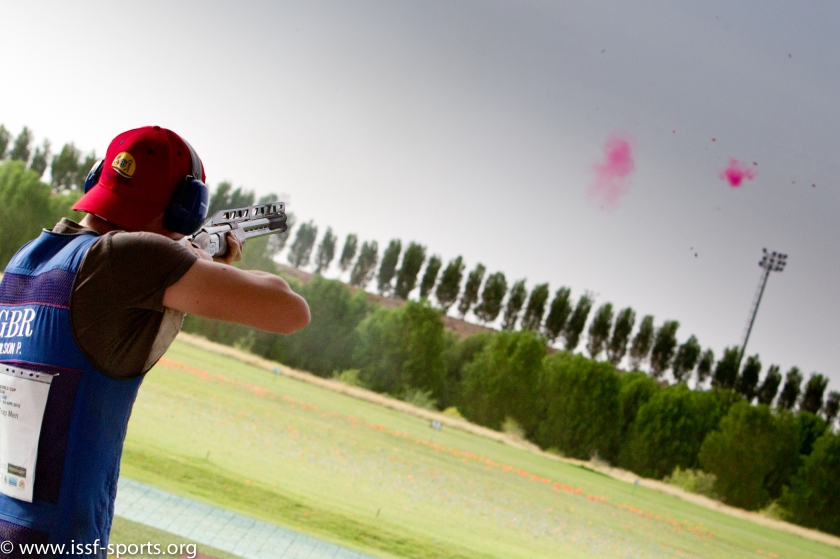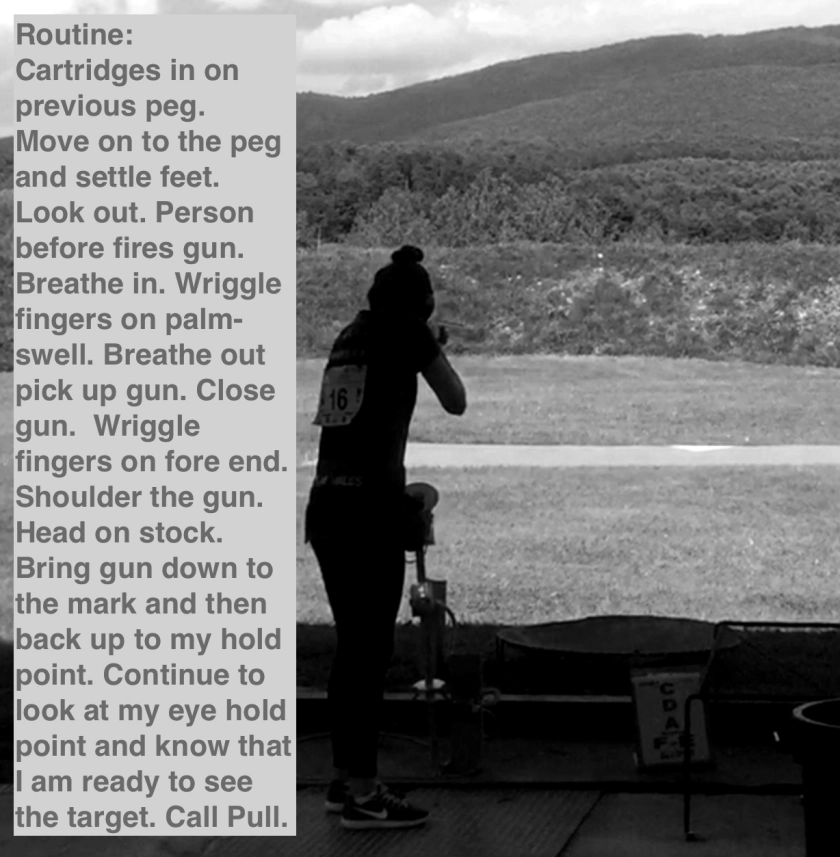The “pre shot routine” has become a talking point lately, and plenty of successful clay shooters have their own; Christian Schofield explores the psychology and looks at how we can put it into practice
The great basketball player Michael Johnson said “you have to expect things of yourself before you can do them”. The importance of confidence in sport is not only endorsed by anecdotes from leading athletes, but also by the findings of eminent sport psychologists. While the need for confidence is obvious, it is not quite so clear as to how we should achieve the appropriate level of self-belief. According to the great psychologist Albert Bandura’s ‘self-efficacy’ theory, the belief that we can achieve a certain level of performance is based on our previous successes, seeing others achieve the goal, our own or the persuasive thoughts of a coach, and the level of control we have over our physiological and emotional states. Other sport psychologists, such as Vealey and Chase, have sought to develop these ideas and, in over 30 years of work, have found that leading athletes rate physical and mental preparation among the most important sources of sport confidence. Therefore, it is not surprising that most top athletes performing self-paced skills, such as shooting, demonstrate a sequence of preparatory actions or ‘routines’.
Although athletes may use many different types of routine, the aim here is to concentrate on the pre-shot routine. This can be defined as a sequence of planned thoughts and actions taken prior to executing the task, with the aim being to concentrate on task-relevant information and to stay in the present moment.
So, what is meant by task-relevant information? Surely, we should follow the Nike logo and “Just Do It”. The approach is right, but it must be built on understanding. Without detailed knowledge, it is unlikely we can develop the level of performance we desire. Deliberate practice requires us to concentrate on the critical aspects of the task and refine performance through repetition. Our problem stems from the fact that if we know every detail of the process, we are likely to try and use this information when a successful result is important. When we over-think the process, we tend to slow down and our movements become stilted. The resulting miss can create a cycle of more control and more misses which, in turn, can lead to stress and a collapse in performance. A solution is to focus on the effect we wish to create.
Psychologists, such as Wolfgang Prinz, argue that there is a relationship between a movement and the sensory effects – or feelings – it creates. The idea being that we can achieve a quality shot if we think about the effect we wish to create. Even if we are not convinced, this type of thought is unlikely to cause a problem. The likelihood is that in adopting an external focus of attention we will avoid the stress that can be induced by over analysing the process (conscious processing). Experiments conducted in high stress situations within golf have revealed that expert performance was enhanced through external focus. However, to develop trust and confidence in this process we should practise it in training situations.
So, what is a routine? It is important to understand the difference between a routine, a superstition and a ritual. Wearing our favourite skeet vest or ensuring that the name on the base of the cartridge is the right way up are superstitions and rituals. A routine is not compulsive and has nothing to do with luck. It should be helpful, flexible, effective and aimed at improving focus and performance. We should focus on effective behaviour and guard against becoming compulsive. To help develop a systematic and flexible routine, Robert Singer produced a five-step strategy. For shooting this might be:
* Readying – Adopt a good stance and ready position. Think about the process we will use to acquire and shoot the target.
* Imaging – Mentally picture a perfect technique and a successful outcome.
* Focusing – Concentrate attention intensely on a relevant external cue or thought… the effect that we wish to create.
* Executing – Perform with a quiet mind… see the target and shoot it.
* Evaluating – Review the quality of the shot and the implementation of the previous four steps of the routine. Learn and adjust for the next shot if necessary.
The process can be used when developing our technique, as well as for maintaining performance under pressure. Wilson and Richards adapted the process to help accomplished athletes in intense competition. The process is:
* Prepare – Includes both readying and imaging. It suggests that we refine the two underlying steps so that they are seamless or merged into one robust, repeatable and efficient process.
* Perform – Performance should be instinctive… “Just Do It.” This encompasses both focusing and executing to create the ‘quiet mind’ associated with unconscious performance. All thinking has been done in the ‘Prepare’ phase. Here, we should look, steady the eyes in the correct position and call “Pull”.
* Review – With experience, we will become more aware of our performance and be able to use this knowledge, intrinsic feedback, to prevent subsequent errors. This process should be perfected in training.

Developing a robust routine is without doubt difficult, time consuming and perhaps always a work in progress. If we are prone to miss the first target, or perhaps one of the last pair, then it may be worth us examining our routine to see how mentally prepared we are for each shot. If we desire consistency in our shooting, routine must be the ‘rock’ of stability on which it is built. To help us do this we can get a friend to video our performance in competition. This will allow us to analyse our physical set-up and help us remember what we were thinking when we shot well and when we missed. We can also try writing a description of our routine as this will help us analyse why we do things and what is helpful to us. Finally, why not watch what the great shots do – this is what Singer and the other psychologists have done across many sports.

